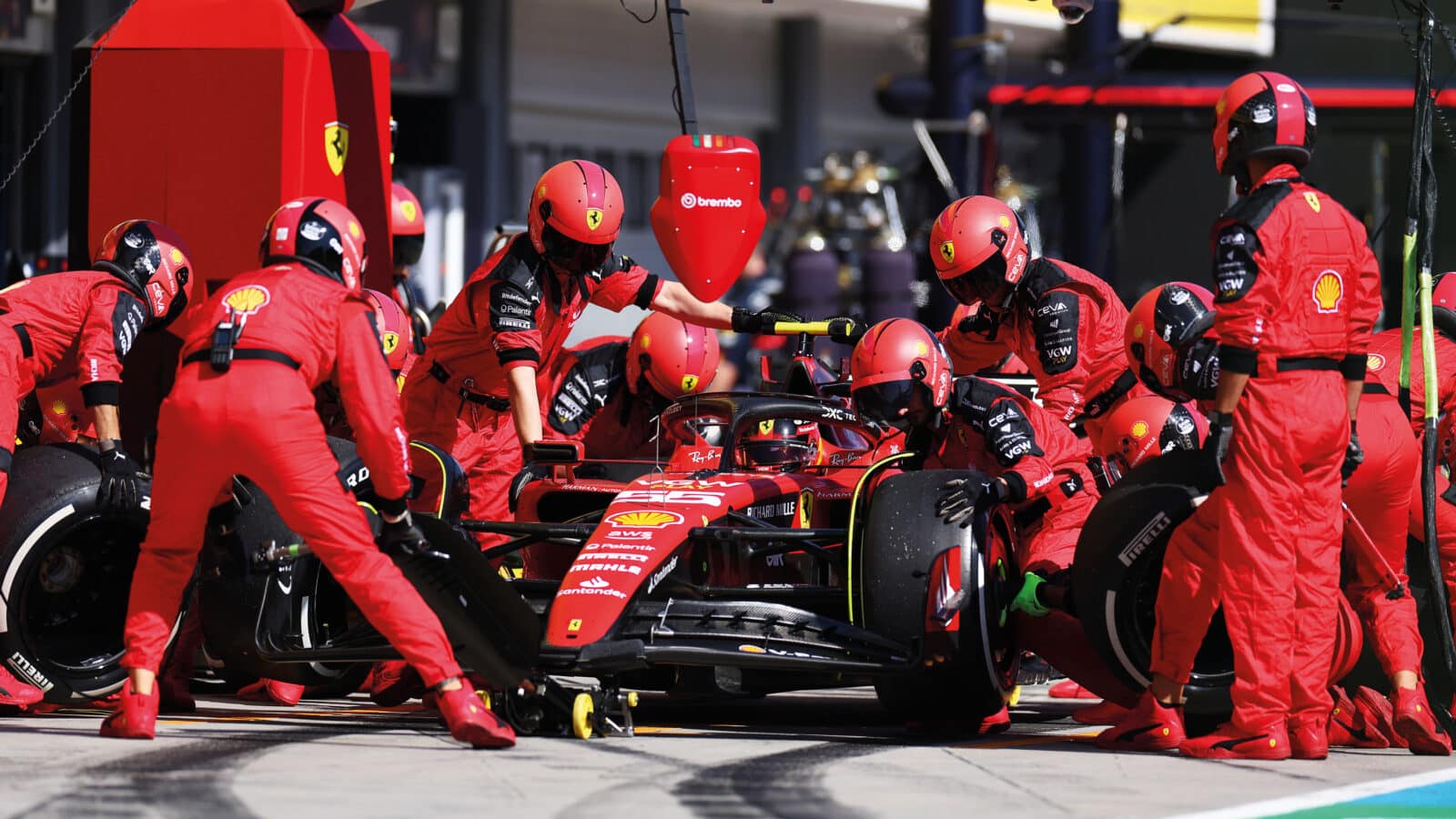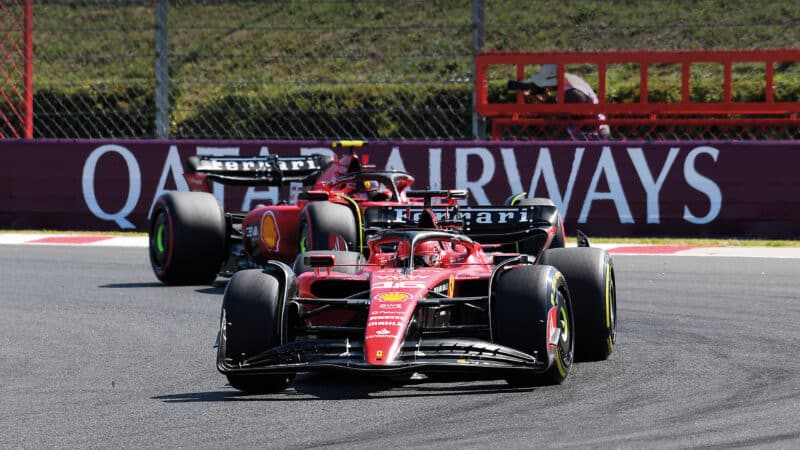F1 tactics: tyre headaches trip up Ferrari in Hungary
Split strategies and crucial errors left Charles Leclerc and Carlos Sainz almost tripping over themselves in Hungary. Mark Hughes explains why tyre headaches were the problem

Getty Images
Ferrari got itself into an awkward interference pattern with the strategies of its two cars in the Hungarian Grand Prix. Partly this came about through the experimental tyre allocation for this race, introduced as part of the joint sustainability drive of the FIA and Pirelli, whereby each car had only 11 tyre sets for the weekend rather than the usual 13 and each of the three qualifying sessions had its own stipulated compound – hards in Q1, mediums in Q2, softs in Q3.
For Ferrari, things became complicated when it found that it just could not get the medium tyre working on their car. Carlos Sainz was finding it a particular problem and he failed to make it out of Q2 as a result, going 11th fastest. Charles Leclerc was 0.15s faster and was able to make it through to Q3 where he qualified sixth.
“The outside world wondered why Ferrari did not swap positions”
The soft C5 tyre didn’t have a long working range and although it was around 1s per lap faster than the medium initially, the short range and the long subsequent stints that enforced in this two-stop race with high degradation, would cost around 20s of race time compared to a medium/hard/medium combination. Hence why Leclerc and the other top eight cars all chose to start on the medium.
For Sainz though, the theoretical fastest combination was irrelevant because he needed to be past the slower cars in between him and Leclerc as soon as possible. For this reason Sainz was put on the softs. It helped him make a great start and opening few corners so that he was up to sixth place, right behind Leclerc.
The outside world wondered why Ferrari did not have them swap positions given that Sainz was always going to be pitting early. But actually, the whole strategy for Sainz, once he’d made up those first lap positions, was to stretch out the soft tyre for as long as possible, to minimise how compromised his subsequent stints would be. So he had no wish to be lapping faster than Leclerc was doing on much tougher medium tyres. Instead he backed away from the turbulence zone of the other Ferrari and just concentrated on minimising the stress on the rear tyres, while trying to build up a gap to drop into when he eventually did stop.

Sainz (behind) was on the quicker tyre early on, but Leclerc had the better strategy at the Hungaroring
Grand Prix Racing
As the hard-tyred Sergio Perez closed up on him, Sainz radioed in. “I can see Checo’s about to pass me. I will box after that.” He came in on the 15th lap. Leclerc stayed out only a further two laps, underlining a) what a good job Sainz had done in extending the stint on his delicate softs and b) the Ferrari’s continuing difficulty with the medium. The earlier stop plus a delay suffered by Leclerc through a malfunctioning wheel gun had undercut Sainz past his team-mate, with Lance Stroll’s Aston Martin between them on much older tyres. Circumstances had not worked in Leclerc’s favour. By the time he found a way around the Aston, Sainz was 4s ahead.
Gradually Leclerc hauled in his team-mate and as the second pitstop window approached he was anxious that he be given pitstop priority. Coming in two laps before Sainz regained him the position lost by the delay at the first pitstop, but in locking up on the approach to the pitlane speed limit line, Leclerc had broken that speed limit, for which a 5s penalty would later be applied. As Sainz was overtaken near the end by George Russell’s Mercedes, it dropped him more than 5s behind Leclerc, who was sixth across the line but seventh (behind the closely following Russell) after the penalty was applied.

